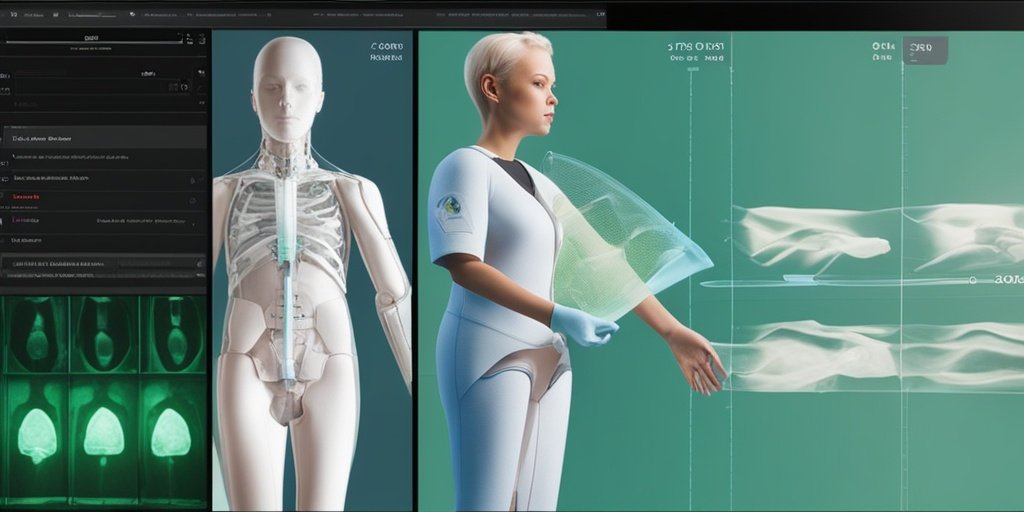⚡ Quick Summary
This study investigates the effectiveness of a commercially available AI tool for detecting paediatric fractures, aiming to enhance healthcare professionals’ (HCPs) diagnostic accuracy. By utilizing a dataset of 500 paediatric radiographs, the research seeks to determine the impact of AI assistance on patient care outcomes.
🔍 Key Details
- 📊 Dataset: 500 paediatric radiographs across four body parts
- 🧩 Participants: 40 healthcare professionals from radiology, orthopaedics, and emergency medicine
- ⚙️ Technology: AI tool – BoneView by Gleamer
- 🏆 Study Design: Multireader multicase (MRMC) with a 4-week washout period
- 🔍 Evaluation: Diagnostic accuracy compared to expert consensus
🔑 Key Takeaways
- 📈 AI tools have shown promise in improving fracture detection in adults, but their efficacy in children is less understood.
- 🧑⚕️ HCPs will assess radiographs for fractures, confidence levels, and management plans.
- 📅 Study duration includes a washout period to minimize bias.
- 🔬 Multilevel logistic modelling will be used to analyze diagnostic accuracy outcomes.
- 🌍 Ethical approval has been granted by relevant health authorities.
- 💰 Funding is provided by the National Institute for Health and Care Research (NIHR).
- 📢 Results will be disseminated through various channels, including peer-reviewed journals and social media.
- 🆔 Trial Registration: ISRCTN12921105.

📚 Background
Paediatric fractures are a common occurrence, yet they can often be overlooked in radiographic assessments. This oversight can lead to serious consequences, including long-term pain and disability. The integration of artificial intelligence (AI) into diagnostic processes holds the potential to enhance detection rates and improve patient outcomes, particularly in vulnerable populations like children.
🗒️ Study
The study aims to evaluate the effectiveness of the AI tool, BoneView, in assisting healthcare professionals in detecting fractures in a retrospective simulated study design. By analyzing a multicentric dataset of 500 paediatric radiographs, the researchers will assess the diagnostic performance of HCPs both with and without AI assistance, providing valuable insights into the tool’s impact on clinical practice.
📈 Results
The anticipated results will focus on the diagnostic accuracy of HCPs in identifying fractures, comparing their performance before and after the introduction of the AI tool. The study will also evaluate changes in simulated patient management plans, providing a comprehensive overview of how AI can influence clinical decision-making.
🌍 Impact and Implications
The findings from this study could significantly influence the future of paediatric fracture management. By demonstrating the effectiveness of AI in enhancing diagnostic accuracy, this research may pave the way for broader adoption of AI tools in clinical settings, ultimately leading to improved patient care and outcomes. The implications extend beyond fracture detection, potentially transforming how healthcare professionals approach diagnostics in various medical fields.
🔮 Conclusion
This study represents a crucial step towards understanding the role of artificial intelligence in paediatric fracture detection. By leveraging advanced technology, healthcare professionals may be better equipped to provide accurate diagnoses and effective management plans for young patients. The integration of AI into clinical practice holds great promise for enhancing healthcare delivery and improving patient outcomes.
💬 Your comments
What are your thoughts on the use of AI in paediatric fracture detection? We invite you to share your insights and engage in a discussion! 💬 Leave your comments below or connect with us on social media:
Artificial intelligence (AI) for paediatric fracture detection: a multireader multicase (MRMC) study protocol.
Abstract
INTRODUCTION: Paediatric fractures are common but can be easily missed on radiography leading to potentially serious implications including long-term pain, disability and missed opportunities for safeguarding in cases of inflicted injury. Artificial intelligence (AI) tools to assist fracture detection in adult patients exist, although their efficacy in children is less well known. This study aims to evaluate whether a commercially available AI tool (certified for paediatric use) improves healthcare professionals (HCPs) detection of fractures, and how this may impact patient care in a retrospective simulated study design.
METHODS AND ANALYSIS: Using a multicentric dataset of 500 paediatric radiographs across four body parts, the diagnostic performance of HCPs will be evaluated across two stages-first without, followed by with the assistance of an AI tool (BoneView, Gleamer) after an interval 4-week washout period. The dataset will contain a mixture of normal and abnormal cases. HCPs will be recruited across radiology, orthopaedics and emergency medicine. We will aim for 40 readers, with ~14 in each subspecialty, half being experienced consultants. For each radiograph HCPs will evaluate presence of a fracture, their confidence level and a suitable simulated management plan. Diagnostic accuracy will be judged against a consensus interpretation by an expert panel of two paediatric radiologists (ground truth). Multilevel logistic modelling techniques will analyse and report diagnostic accuracy outcome measures for fracture detection. Descriptive statistics will evaluate changes in simulated patient management.
ETHICS AND DISSEMINATION: This study was granted approval by National Health Service Health Research Authority and Health and Care Research Wales (REC Reference: 22/PR/0334). IRAS Project ID is 274 278. Funding has been provided by the National Institute for Heath and Care Research (NIHR) (Grant ID: NIHR-301322). Findings from this study will be disseminated through peer-reviewed publications, conferences and non-peer-reviewed media and social media outlets.
TRIAL REGISTRATION NUMBER: ISRCTN12921105.
Author: [‘Shelmerdine SC’, ‘Pauling C’, ‘Allan E’, ‘Langan D’, ‘Ashworth E’, ‘Yung KW’, ‘Barber J’, ‘Haque S’, ‘Rosewarne D’, ‘Woznitza N’, ‘Ather S’, ‘Novak A’, ‘Theivendran K’, ‘Arthurs OJ’]
Journal: BMJ Open
Citation: Shelmerdine SC, et al. Artificial intelligence (AI) for paediatric fracture detection: a multireader multicase (MRMC) study protocol. Artificial intelligence (AI) for paediatric fracture detection: a multireader multicase (MRMC) study protocol. 2024; 14:e084448. doi: 10.1136/bmjopen-2024-084448